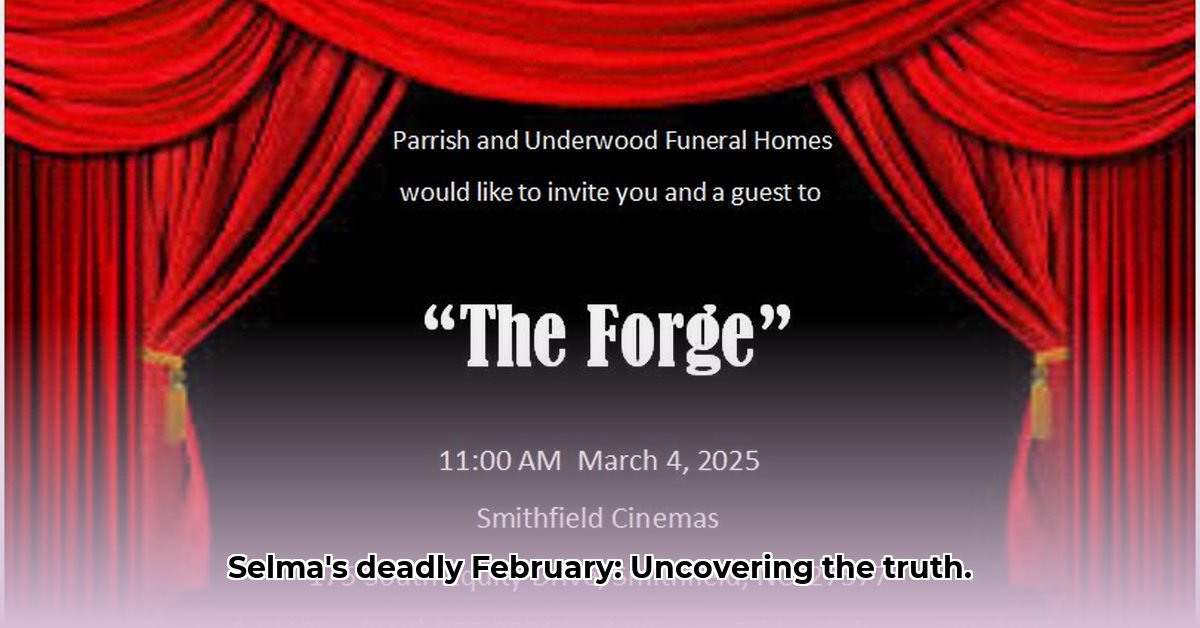
Parrish Funeral Home Data: A February 2025 Anomaly
Selma, North Carolina, experienced an unusual increase in reported deaths during late February 2025, based on data obtained from Parrish Funeral Home. While the precise number remains undisclosed, a significant clustering of deaths occurred in the final two weeks of the month. This observation raises critical questions, but the available data from a single funeral home presents limitations in definitively identifying the cause. For comparison, see data from other funeral homes, such as Cassidy Flynn Funeral Home.
Unraveling the Data: Temporal and Demographic Patterns
Analysis of Parrish Funeral Home records reveals a temporal cluster of deaths concentrated in the latter half of February 2025. The age range of the deceased was broad, spanning several age groups. The majority of decedents resided within Selma, NC, suggesting a potential localized factor. However, these findings are constrained by data limitations, most significantly the absence of cause-of-death information.
Key Findings:
- A noticeable cluster of deaths occurred during late February 2025 at Parrish Funeral Home.
- The age range of the deceased was diverse, ruling out a single age-specific cause.
- Most decedents were Selma residents, suggesting a potential localized factor.
Limitations of the Data: Important Considerations
Several limitations must be acknowledged. The data solely reflects the families who chose Parrish Funeral Home's services during that period; it does not capture the totality of deaths within Selma. Crucially, the data lacks information regarding causes of death, hindering any definitive causal explanation. This is a significant limitation of the analysis. Any conclusions are therefore tentative and further data collection is absolutely necessary.
Actionable Intelligence for Key Stakeholders
To better understand this mortality trend, collaborative efforts are needed from various stakeholders. The following actions are recommended:
Public Health Agencies: Conduct a comprehensive epidemiological investigation into potential causes (e.g., disease outbreak, environmental hazards), and enhance existing systems for collecting cause-of-death data to allow for rapid response to similar future events.
Researchers (Epidemiologists, Public Health Experts): Secure and analyze official death certificates, obtaining reliable cause-of-death data. Compare this with population statistics and environmental data to identify any potential correlations or underlying factors. (Example: Analyze population density and geographic clustering of deaths).
Parrish Funeral Home: Review internal records for patterns or anomalies that could shed light on the situation and develop enhanced internal record-keeping systems that account for larger surges in demand. This will improve the institution's capacity for managing crises in the future.
Community Leaders: Reassess community emergency preparedness plans, focusing on resource allocation and communication protocols during times of crisis.
The Path Forward: A Call for Further Investigation
The elevated death rate observed at Parrish Funeral Home in Selma during February 2025 necessitates a thorough investigation. The absence of cause-of-death information significantly limits any conclusions. Future analyses must incorporate official death certificate data, more comprehensive demographic information, and potential environmental factors. Only through collaborative efforts and robust data collection can we elucidate the underlying cause(s) and enhance community preparedness for future events. This situation highlights the importance of robust data collection and inter-agency collaboration in public health surveillance.